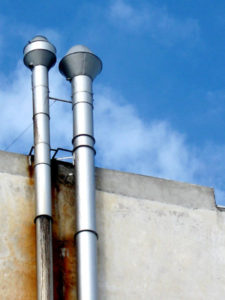The City of Newark recently enacted an Environmental Justice and Cumulative Impacts Ordinance. Under the landmark ordinance, developers will be required to provide certain sustainability information to the Board of Adjustment and Central Planning Board as part of an application for land use approvals. 
The City maintains that the ordinance is necessary because the City suffers from high levels of environmental pollution, in large part due to its dense transit network, including a major airport and seaport, industrial uses, and waste and sewer treatment facilities. Studies have found that the city’s school-age children have double the state and national average rate for asthma.
Accordingly, the new ordinance aims to proactively mitigate environmental health hazards without thwarting development. “We hope to set a national precedent for urban revitalization that takes into account health impacts,” stated Newark Mayor Ras J. Baraka.
The Environmental Justice and Cumulative Impacts Ordinance specifically applies to applicants for major site plan approval from the Newark Central Planning Board or a variance from the Newark Zoning Board of Adjustment that are seeking approval for a Commercial, Light Manufacturing or Industrial Use project and requires one or more approvals or permits from the U.S. Environmental Protection Agency (EPA) or the New Jersey Department of Environmental Protection, or requires inclusion in the Essex County Solid Waste Management Plan. These covered applicants will be required to prepare and submit an Environmental Review Checklist to the Planning Board or Zoning Board.
As detailed in the ordinance, the Environmental Checklist for applicants with a Commercial or Light Manufacturing Use would require information regarding environmental impact activities, including: air pollution, stormwater retention and discharge, hazardous or toxic materials, truck trips, fuel use, and hazardous and solid waste generation and recycling. Developers may also elect to provide information to “highlight elements of design, construction or operation intended to mitigate, minimize, or avoid negative environmental impacts.”
Applicants with an Industrial Use must submit more detailed information. For instance, they must provide a brief summary of pre-existing environmental conditions within a half-mile radius of the proposed project site and must detail the number of jobs the project will create. The form also requires developers to describe any efforts to avoid, minimize, and mitigate any pollution emissions or environmental impacts both during construction and during operation.
The Ordinance also increases the role of the City’s Environmental Commission, which now will have the opportunity to review and comment upon these applications and the Environmental Checklist.
For more information about Newark’s new ordinance or the legal issues involved, we encourage you to contact a member of Scarinci Hollenbeck’s Government Law Group.
